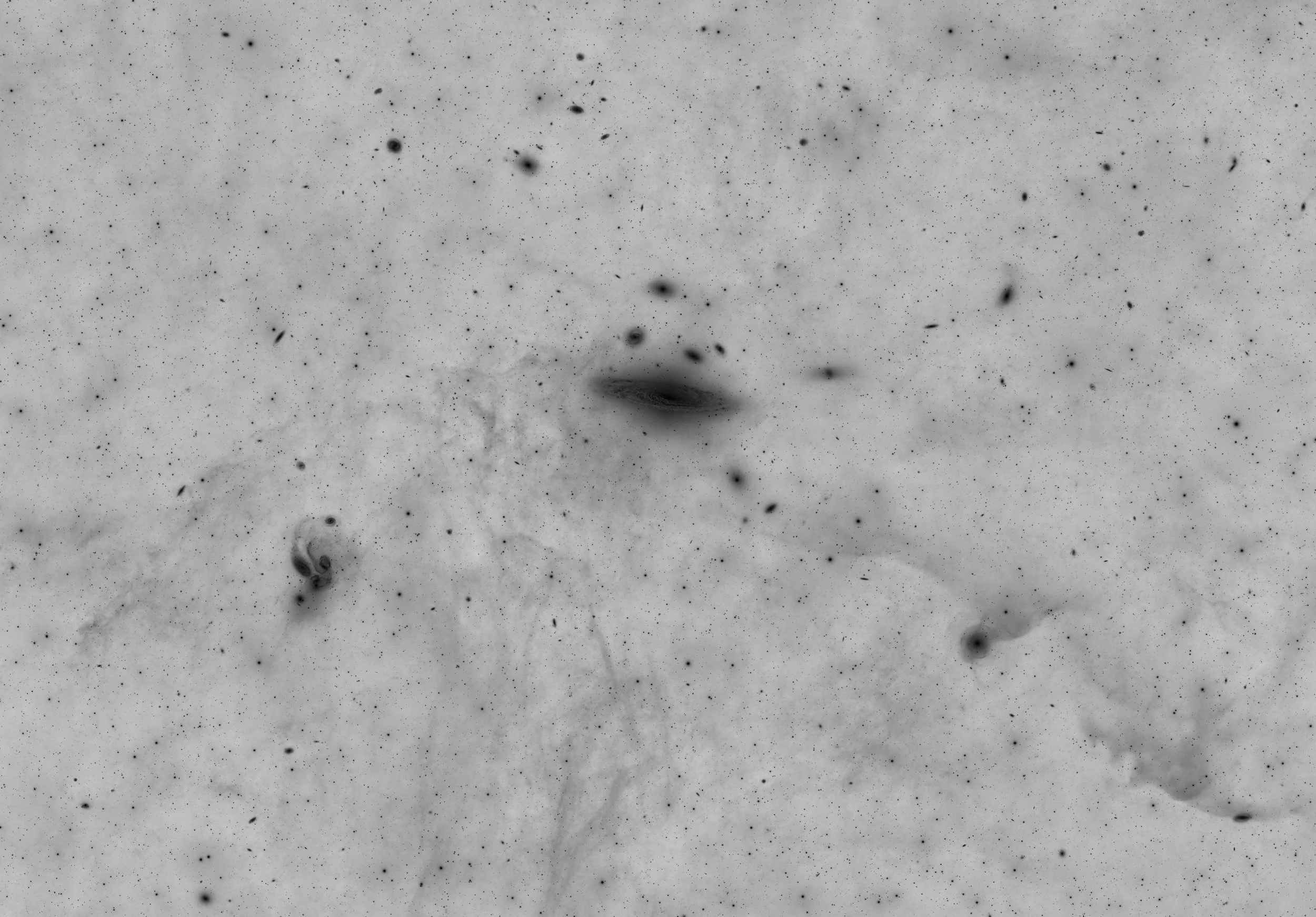Deerlick Group
About the Subject
The Deerlick Group featuring NGC 7331, "The Fleas" and Stephan's Quintet
The Deerlick Group is a grouping of galaxies in the constellation Pegasus which happen to be in the same line of sight, though the background galaxies are not related to or gravitationally bound to NGC 7331 which is the most prominent galaxy in the field of view. NGC 7331 lies at a distance of roughly forty million light years, while the "Fleas" (the group of galaxies above NGC 7331 in this image) are at distances of 295 to 365 million light years. Even these galaxies may not be gravitationally bound to each other in a cluster.
For a long time, NGC 7331 was thought to be a "twin" to the Milky Way, similar in size, shape, and mass to our own galaxy. However, it is now believed based on research done in the early part of the 21st century that the Milky Way is actually a barred spiral. One of the most interesting features of NGC 7331 is that its core is rotating in the opposite direction of its spiral arms. NGC 7331 was first discovered in 1784 by William Herschel.
The name, "Deerlick Group" is attributed to the amateur astronomer Tom Lorenzin who observed the grouping from the Deerlick Gap Overlook in North Carolina
In addition to the Deerlick Group, you can also see Stephan's Quintet to the left in this image. Four of the five galaxies in the group represent the first compact galaxy group ever found, and these four galaxies will likely merge together in the future. The group was found in 1877 by Édouard Stephan of Marseilles Observatory. Stephan's Quintet lie at a distance of roughly 290 million light years. The galaxy at the top of the group in this image, PGC 69279, is outside the compact group.
Take a look at NGC 7315 image in the lower right as well as the Deerlick Group and Stephan's Quintet. I have uploaded a separate luminance frame of just this section. NGC 7315 is classified as a lenticular galaxy (S0), but I see the remains of a ring structure in my data--the horns sticking out to the East and West in the image that "hint" that they might go all the way around 7315. I checked to ensure this isn't just an image artifact or reflection of some sort by looking at other images that include the same general region. Reasonably deep images of the same area seem to show the beginnings of the same structure, though a cursory search didn't turn up anything showing the entire structure. I'm wondering whether this might be a ring structure from a prior collision?
Date, Location, and Equipment:
October 22to Nov 2, 2024, Rowe, NM, USA
Astro-Physics 305mm Riccardi-Honders Cassegrain @ f/3.8
Astro-Physics 1100GTO AE Mount with Absolute Encoders
QHY600PH Monochrome Camera at -10°C
Chroma 50mm x 50mm filters
3nm H-Alpha
LRGB
17h 30m Luminance, 10h 20m H-alpha, 8h 10m each RGB, 52h 20m total integration
Software:
Astro-Physics APCC for mount control and advanced pointing model
NINA for autofocus, sequence of images, and camera control
PHD2 for guiding
PixInsight for calibration and all post processing


